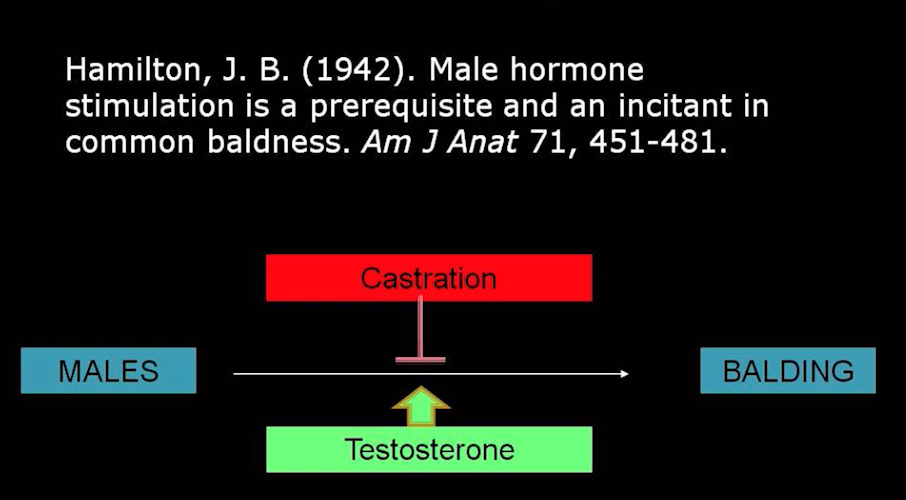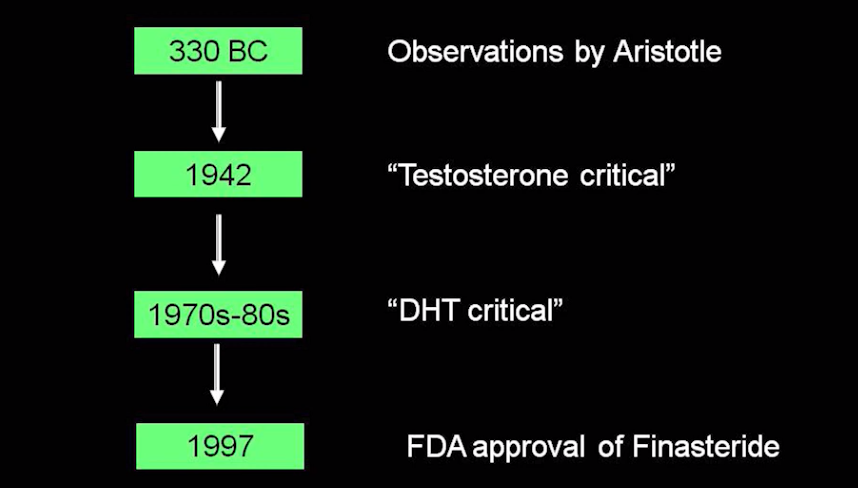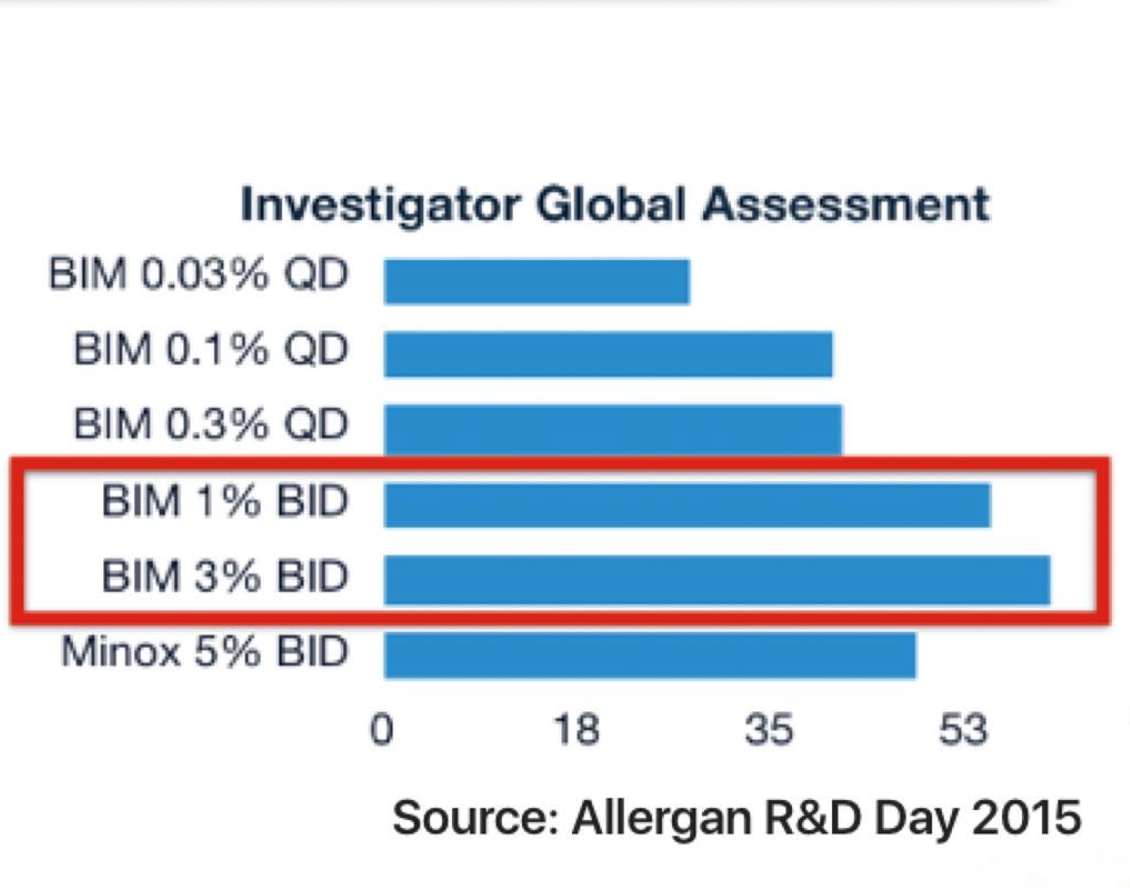Is Androgenetic Alopecia (AGA) Caused Only by the Effects of DHT ?
Despite the Myth, Androgenetic Alopecia is Not Simply a Story of DHT
Androgenetic alopecia is a type of hair loss that affects men and women. In males, this condition is also referred to as male balding or male pattern hair loss and eventually affects some 80 to 90 % of males. In females, the condition is referred to as female pattern hair loss or simply hair thinning and affects 40% of women by age 50. The purpose of this article is to deal with some misconceptions, wrong information, errors and myths that many people have about the role of DHT in the balding process. DHT is certainly important - but other factors must be considered too.
The Evolution of the DHT Theory of Male Balding
Some of the earliest observations about the role of hormones in male balding happened in the time of Aristotle back in 300 BC. Aristotle showed that castrated males (eunuchs) did not develop balding. JB Hamilton in 1942 did additional pioneering work to understand male balding. He showed that male hormones are relevant to the balding process. Specifically, he confirmed observations by Aristotle and others that males that were castrated before puberty did not go on to develop balding. Hamilton took this further and showed that if testosterone was given back to castrated males, the males proceeded to develop male balding. This showed that male balding was an “androgen-dependent” process.
Further key work in understanding male balding was done in the 1970s and ultimately published in the New England Journal of Medicine. These were studies that showed that male pseudohermaphrodite living in the Dominican Republic with a genetic deficiency known as 5 alpha reductase deficiency did not produce dihydrotestosterone (DHT) and did not develop male balding. These findings lead ultimately to the rational development of drugs such as finasteride and dutasteride which block 5 alpha reductase and lower DHT levels.
The Story of Male Pattern Balding has a DHT Chapter but Don't Forget to Read the Others
From 300 BC to the 1990’s, the story of male balding seemed pretty clear. Male hormones, particularly the infamous DHT, seemed to be what male balding was all about. Blocking DHT was what treatments were all about.
Many people incorrectly assume that male balding is just a DHT story. Many people incorrectly assume that this DHT chapter is the only chapter they need to read when trying to understand male balding. While it’s true that DHT has a whole lot to do with male balding - the correct way to state it is “male balding is due in part to the effects DHT on hair follicles that are genetically sensitive to this hormone.”
DHT not the only chapter in the balding story
DHT not the only chapter in the balding story. One only need to consider a few other treatments that are used for balding to very quickly realize that male balding must be much more complex than just a DHT story. Minoxidil (Rogaine), for example, has nothing to do with DHT - and yet it helps some people with male balding. Granted I agree that finasteride and dutasteride are much much better treatments than minoxidil - but if DHT was the only thing we need to think about when it comes to treating male balding then minoxidil would not be expected to have any sort of benefit. Well, it does. Low level laser therapy also has nothing to do with DHT hormone levels - and yet it helps some males with their male balding. Platelet rich plasma (PRP) also has very little to do with DHT- and yet it helps some males with their male balding.
Drug Companies are Investing Large Sums with the Knowledge that Male Balding is Far Far More than A Simply DHT Story.
At least 12 pharmaceutical companies are investing millions upon millions of dollars with the clear understanding that DHT is not the only chapter in the balding storybook. These companies are hoping to the first to market with brand new types of drugs - again drugs that have nothing really to do with DHT. A brief summary of the drugs is below.
If Male AGA is Far More than A Simply DHT Story, Female AGA is Far Far Far More than A DHT Story
If you have now come to realize that male balding is a bit more complex than simply a story about DHT, I’d like to point out that female androgenetic alopecia (i.e. female pattern hair loss) is even more complex. If you think for even a moment that you’re going to apply the same DHT story that you used in males to explain balding to the mechanisms operating in females with androgenetic alopecia, you’re going to come up short in terms of your ability to explain hair thinning in women.
Androgenetic alopecia in females is a far more complex story - and we still don’t know all of the mechanisms that govern how hairs thin in women. Of course, there is some aspects of the DHT story that relevant to female thinning. But finasteride and spironolactone and anti-androgens are far less consistently helpful in females than in males. Other treatments such as minoxidil and laser may be far more helpful in some women than in males. In other words, there are likely several different mechanisms that are contributory to androgenetic alopecia in females besides simply a DHT story. As further information for reflection to readers who still doubt this information, one must consider that some women with a genetic condition that completely makes them insensitive to the effects of androgens (called androgen insensitivity syndrome) can still develop androgenetic alopecia. Even women with low testosterone and low DHT levels can develop androgenetic alopecia. There are even some androgen deficient women who do not develop any balding whatsoever when you give them back supplemental androgens through various means of testosterone replacement therapy.
Conclusion
Is androgenetic alopecia simply due to the sensitivity of hair follicles to DHT? Well, it’s a good story, but it’s only part of the story. The DHT chapter is an important chapter to read in the story of male balding and female thinning, but be sure to read the remaining chapters of the story book. The DHT story is not the only story - and many pharmaceutical companies are banking on this concept.
This article was written by Dr. Jeff Donovan, a Canadian and US board certified dermatologist specializing exclusively in hair loss.




